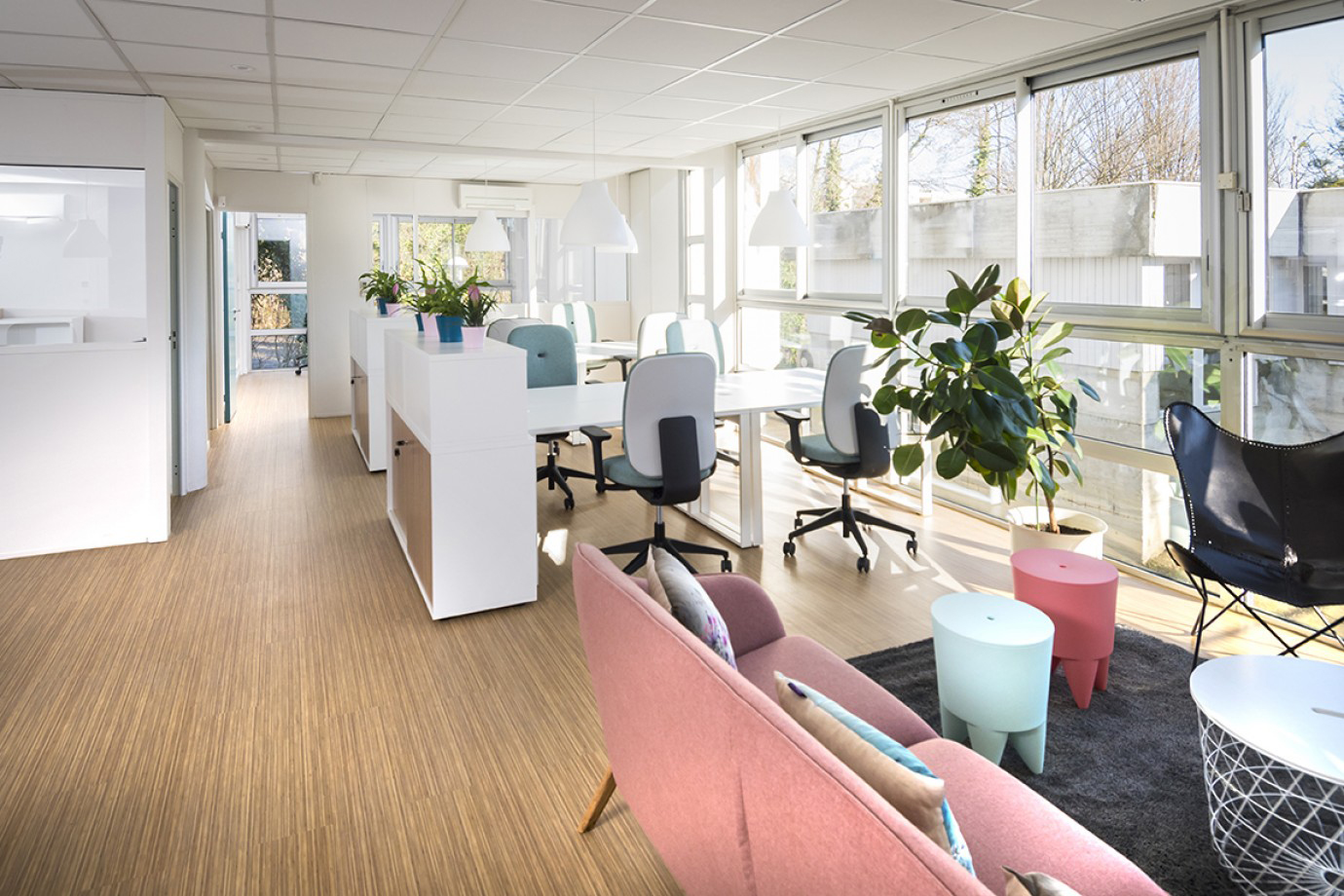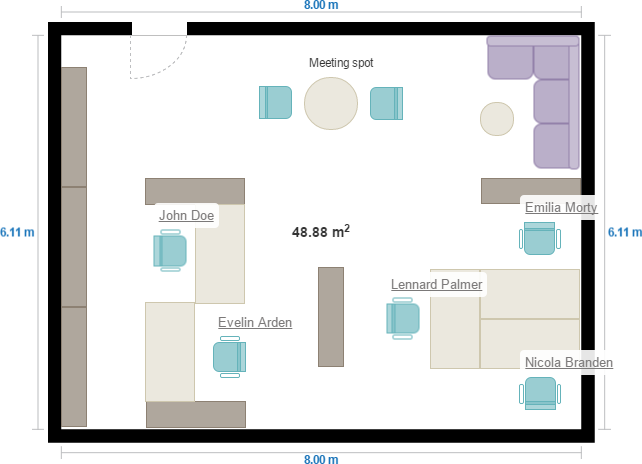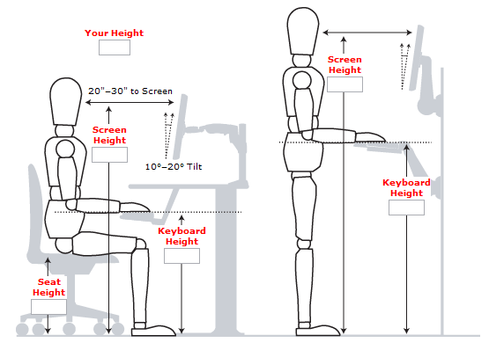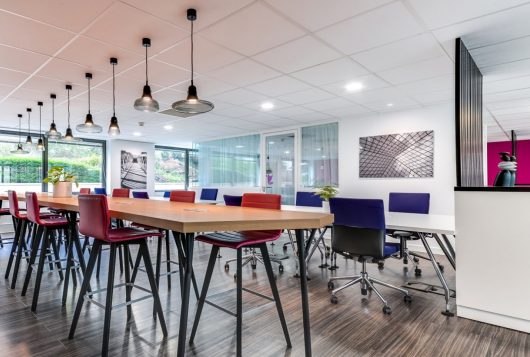7 TIPS TO IMPROVE YOUR COWORKING SPACE

If “good workspace” is synonymous with designer furniture, office furnishings or open space, then you’re not in the loop!
A good workspace is above all about improving productivity!
“Oh no! Another article that will talk about well-being in the office” you will tell us? Well no, not exactly. But it is true that a good workspace must take into account the well-being of the worker while providing flexibility. And the trendy spaces that have got it all figured out are the coworking spaces.
Objectives to keep in mind when optimizing your coworking space
Wanting to improve the workspace is fine, but what’s the point? To help you not to lose sight of the essential points when redesigning your coworking space, here is a small checklist:
- Productivity you will improve!
Whether it is in a coworking space or in an open-space office, your workers and coworkers must improve their productivity. If you were planning to put the shared printer at the other end of the building … forget it!
- Interaction and creativity you will foster
And yes, it is difficult to work in a workspace with other people without thinking about exchanges and other discussions. This aspect is one of the key factors in the success of coworking. Don’t neglect it!
- Flexibility you will provide
Furniture screwed to the floor allowing only one configuration? Hum … Not very trendy all this. Improving a workspace also means allowing to play on the space and to arrange the furniture according to the coworkers’ needs. So play modularity !
- Marketing you will develop
Have you (or are you going to) work hard to make your coworking space a pleasant work space that meets the needs of coworkers? Make it known and “market” your offer!
- The costs you’ll watch out for
Design also means costs. Make the most of your space in order to make it profitable.
Then, here are 7 small steps to make your workspace a temple of well-being and productivity at work.
1) Different areas to meet needs
A coworking space must first and foremost meet the needs of coworkers. By creating specific areas you will meet them.
- The open-space zone: this is what you expect to find first in a coworking space.
- The “private” area: it is a space allowing to receive outside people without disturbing the other coworkers.
- One (or more) meeting room(s): this space allows teams to meet in your premises and, if by chance this space was not rented, you can create a file and rent it on chooseandwork to external people.
- Separation zones: delimiting the spaces is essential to structure the whole. Moreover the walls allow to soundproof the space.
- Relaxation areas to promote exchanges
Lacking inspiration? This Pinterest board will help you find your style! board on Pinterest
Here is also an example of a coworking layout

2) Ergonomics and comfort, the key words to respect for the furniture
If you were planning to create a space with boards and trestles then you are wrong. Ergonomics is an important point not to be neglected.
The height of desks and chairs should ideally be adjustable to fit all your coworkers. The disadvantage of this type of furniture is its higher cost than normal furniture.
Compact desks can also be a solution, but be careful not to take too short work surfaces. To overcome this disadvantage, consider equipping the office with a return where your coworkers can store their belongings and other files.
Another trend is the standing desk. This can be interesting for short-term bookings and also save space.

3) Noise management for a Zen work environment
Between the printer, the telephone and sneezing and talking office neighbors, noise is a constant nuisance, especially in an open-space environment.
So how do you deal with this constraint?
The most obvious solution is to invest in soundproofing: carpet, rugs, partitions, plant walls …
Another idea is to set up authorized noise zones. Their purpose is to allow people to let off steam. An example? A playroom with a table soccer, video games…
Finally, investing in an audio system and playing background music also helps reduce noise.
4) Plants, flowers and animals
According to a 2007 study conducted by the American Society of Horticultural Sciences, installing plants in an office improves productivity, reduces absenteeism and stress levels.
In addition to the decorative side, plants (and flowers) also reduce noise pollution by attenuating noise. This increases the budget for coworking space and takes up space, so if you are really limited, know that you can install plant posters. Of course the effect will not be the same, but it will give a Zen feel to the open-space.
Finally, be aware that animals in the office also help to reduce the stress level. If you want to know more about this subject, read the article.
5) Provide for balanced snacks
Getting up early, having been at work for a while … the morning coffee break is also a point not to be neglected. You are certainly considering putting a coffee and food dispenser at the disposal of your coworkers? It’s a good idea but … not trendy.
Many people skip breakfast, thus depriving themselves of a healthy and balanced diet often due to lack of time (see our article Why take the time to eat lunch at lunchtime?). So forget about sugar-sweetened chocolate bars and other cereal bars in vending machines. Fruits and other salads will make a big hit in your coworking space and allow those who skip lunch to make up for it even if it’s on a piece of desk.
6) Simple tools to boost creativity
When we imagine a coworking space, we visualize a pleasant open-space, an active community of coworkers who share and exchange, creativity, innovation …
Creativity and innovation means whiteboards and other systems for writing on walls. Simple to set up, these solutions will stimulate meetings and other brainstorming sessions, but will also bring life to your space.



